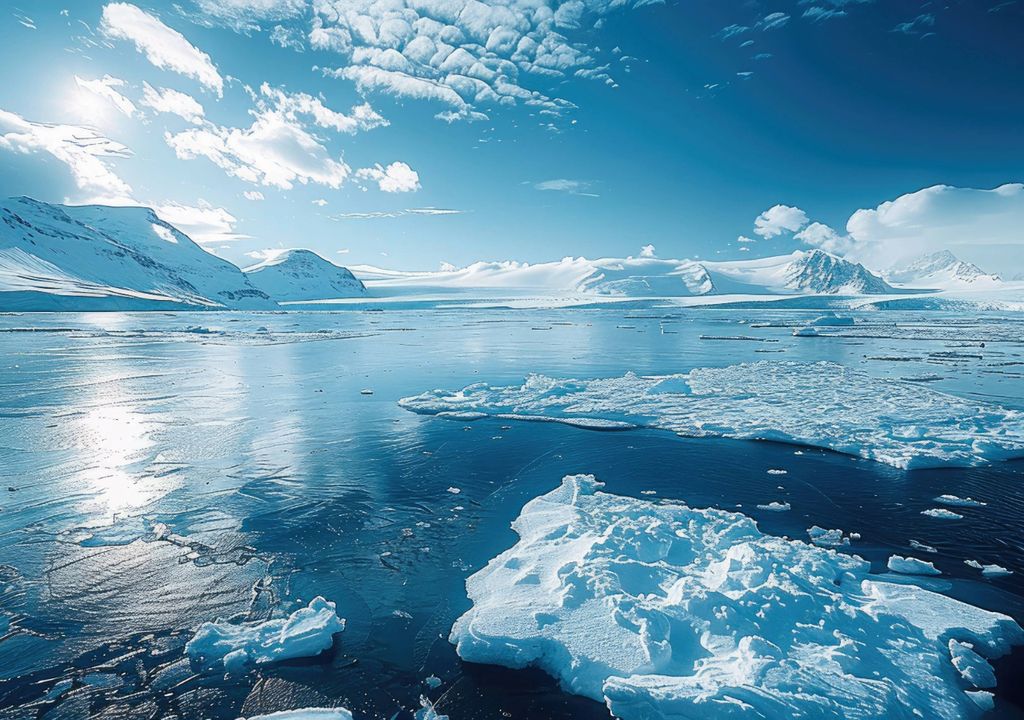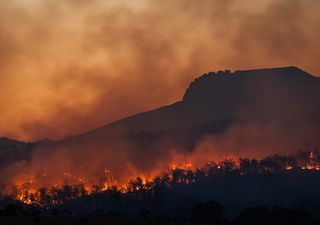Climate indicators reveal 2023 was yet another record-breaking year
A number of records, including global temperatures, were broken in 2023 according to analysis of Earth’s key climate indicators.

It’s official – 2023 was a record year for a whole range of climate indicators including global temperatures on sea and land, global sea level and the level of atmospheric greenhouse gases.
Nearly 600 scientists in 60 countries contributed to the 34th State of the Climate report, which provides the most complete update on Earth’s climate indicators, notable weather events, and other data collected by environmental monitoring stations and instruments on land, water, ice, and in space.
Temperatures soared
The report found 2023 was the warmest year since records began in the mid-1800s, beating the previous record set in 2016. The global average surface temperature reached 1.46°C (± 0.1 °C) above pre-industrial levels, the HadCRUT5 global temperature dataset revealed. Individually, June to December 2023 were the record warmest, and the year was the 9th consecutive year >1°C above the pre-industrial average.
The highest average annual global sea-surface temperature was logged, beating the previous record by 0.13°C. The ocean heat content, a measure of heat from the sea surface to a depth of 2km was also the highest on record. Starting in June, a series of marine heatwaves affected widespread regions of the North Atlantic, with local temperature anomalies exceeding +3°C.
“Following the El Nino conditions that developed in the latter half of the year, exceptionally high temperature anomalies were experienced globally,” says Dr Richard Cornes, a senior research scientist in National Oceanography Centre’s Marine Physics and Ocean Climate group. “Particularly extreme anomalies were also recorded in the Northern Hemisphere. The frequency of marine heatwaves was also high, with 94% of the global ocean surface experiencing at least one heatwave event and around half of those being strong and 10% severe.”
Sea levels rise while sea ice melt
For the twelfth successive year, satellite altimetry revealed the average global mean sea level (CMSL) in 2023 was the highest on record, rising to 101.4mm above levels in 1993, due to increased contribution of ice melt from ice sheets in Greenland and the Antarctic, glaciers and thermal expansion of the ocean. Year-on-year, the GMSL has increased around 3.2mm a year (with 0.4mm variability) since 1993, compared to 1.6mm during the 20th century, suggesting sea level rise is accelerating.
Meanwhile, Antarctic Sea ice reached an all-time record low, surpassing the previous record lows set in February 2022. On 6th July, a new record-low daily sea ice extent was 1.8 million square kilometres, lower than the previous record low for that day.
Long lasting effects
“2023 will linger long in the memory of the climate record,” says the Met Office’s Dr Robert Dunn, one of the report’s authors and editors. “Heat from the tropical Pacific courtesy of a strong El Niño event imparted warmth to the planet’s atmosphere ensuring that 2023 was going to be a warm year. We have had El Niño events before, but last year was notable as the El Niño coincided with other events, such as the North Atlantic marine heatwave and the all-time low for Antarctic sea ice extent."

Greenhouse gas concentrations were the highest on record during 2023 as carbon dioxide, methane and nitrous oxide all reached their highest measured atmospheric concentrations during the year. It was the fourth highest year-on-year growth since the 1960s.
Dunn says these increases are “fuelling ever-greater temperatures” and “until we see greenhouse gas concentrations in the atmosphere begin to decline, then further records are likely before the end of the decade.”
Extreme events
Dunn says that in 2023, “the impact of these warmer temperatures on other metrics of our climate system were clear, for example with over 1kg of extra atmospheric water vapour per square metre of the Earth’s surface compared to the long-term average, and yet also a record high area of land under extreme drought conditions.”
Heatwaves and droughts contributed to wildfires worldwide, particularly in Canada where they burnt from late spring to early autumn, burning an area more than twice the size of Ireland, and consuming three times more biomass than the previous record.
Despite being dry, the rain was more intense, says Marie Tye of U.S. National Science Foundation National Center for Atmospheric Research (NSF NCAR): “Our analysis shows that 2023 was one of the driest years since 1979, but global one-day maximum rainfall totals over land were close to average even in regions otherwise noted as in drought, demonstrating increased intensity of the rain that did fall.”
News reference
State of the Climate 2023, Bulletin of the American Meteorological Society








